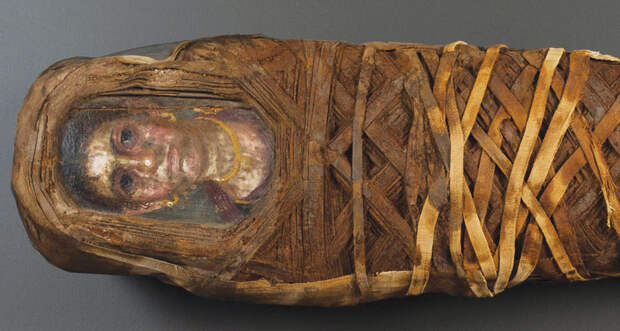Author: Howard Wolinsky / Source: Science News

Everybody’s a critic. Even back in second century Egypt.
While digging in Tebtunis in northern Egypt in the winter of 1899–1900, British archaeologists stumbled upon portraits of affluent Greco-Egyptians placed over the faces of mummies.
One grave contained an ink and chalk sketch, a bit larger than a standard sheet of printer paper, of a woman from around the years A.D. 140 to 160. The sketch includes directions from an unidentified source to the artist to paint the “eyes softer.”That ancient critique is now the name of a temporary exhibit at Northwestern University’s Block Museum of Art in Evanston, Ill. “Paint the Eyes Softer: Mummy Portraits from Roman Egypt” features the sketch, along with six more intact or nearly intact Egyptian funeral portraits, one still attached to its mummy. All were discovered more than a century ago but recently examined using modern scientific tools.
The relics from this time period don’t resemble your granddad’s King Tut. Egyptians applied a new approach to mummies during the Roman-dominated era from the first through third centuries A.D. These mummies featured portraits of the deceased held in place by the linens wrapping the dead. Such paintings served as a prelude to other panel paintings in the ancient world, including Christian icons.
Excavators separated the portraits from the mummies, which were supposed to have been together for eternity, says Essi Rönkkö, Block’s curatorial associate for special projects.
Five of the portraits, on loan along with other materials from the University of California, Berkeley, are highlighted in one of the exhibit’s showcases: two men, a boy and two women. These lifelike paintings of…The post Modern tech unravels mysteries of Egyptian mummy portraits appeared first on FeedBox.